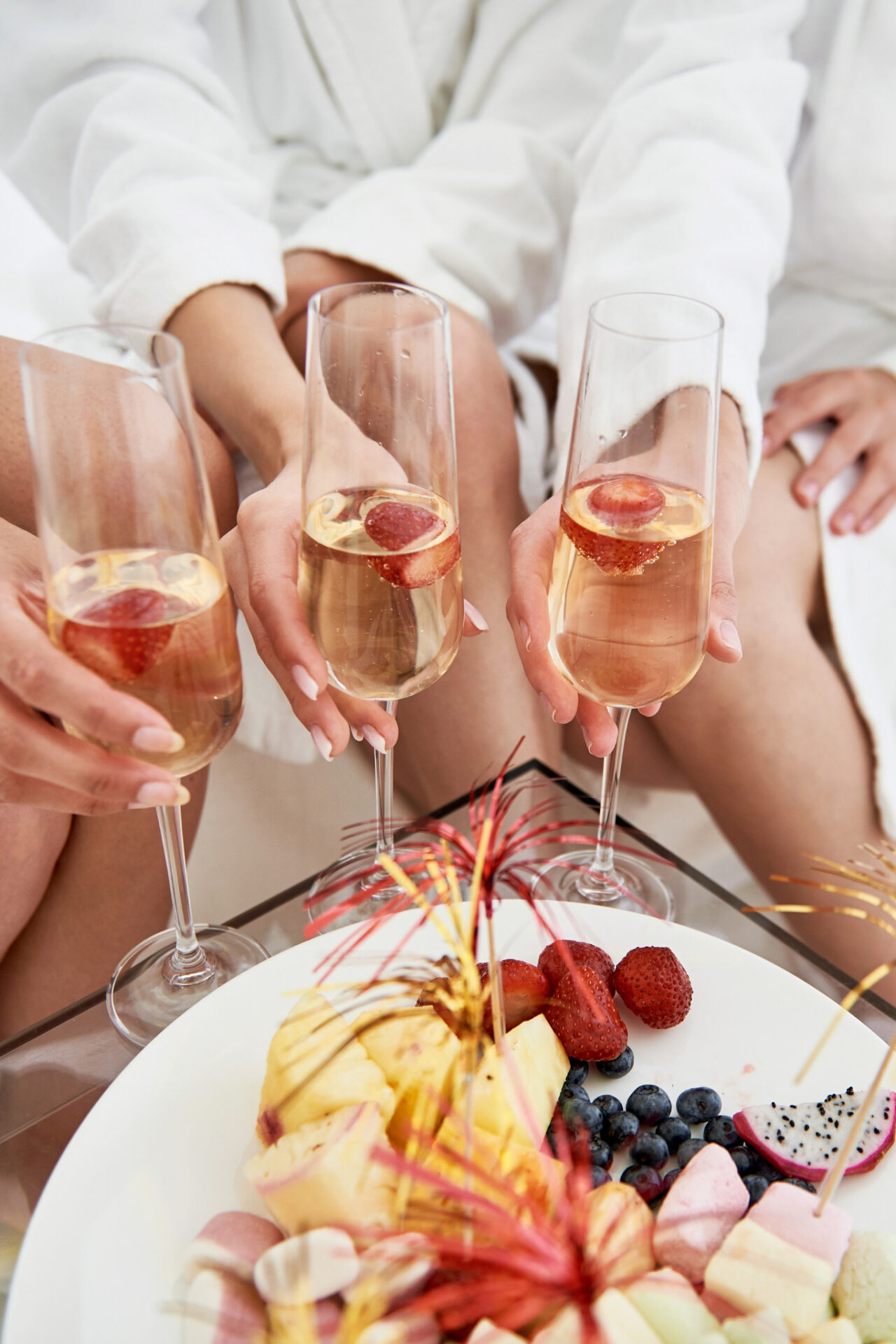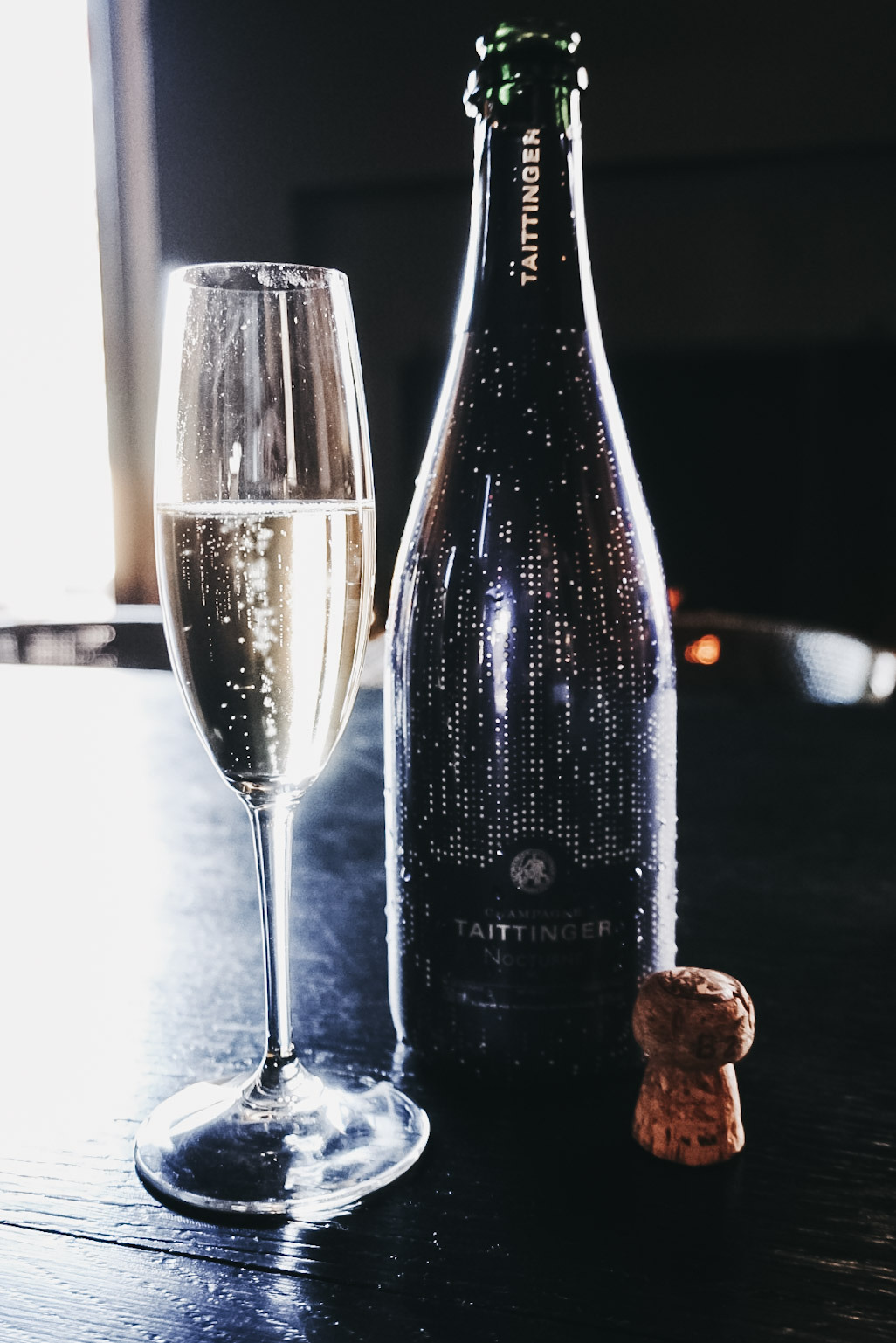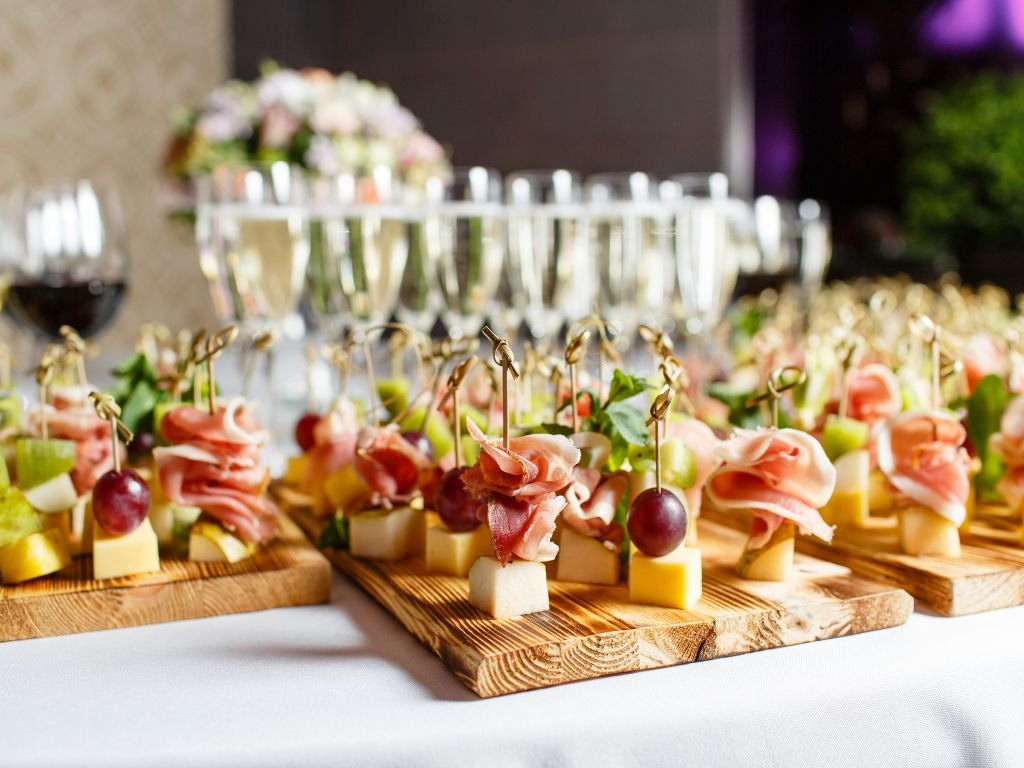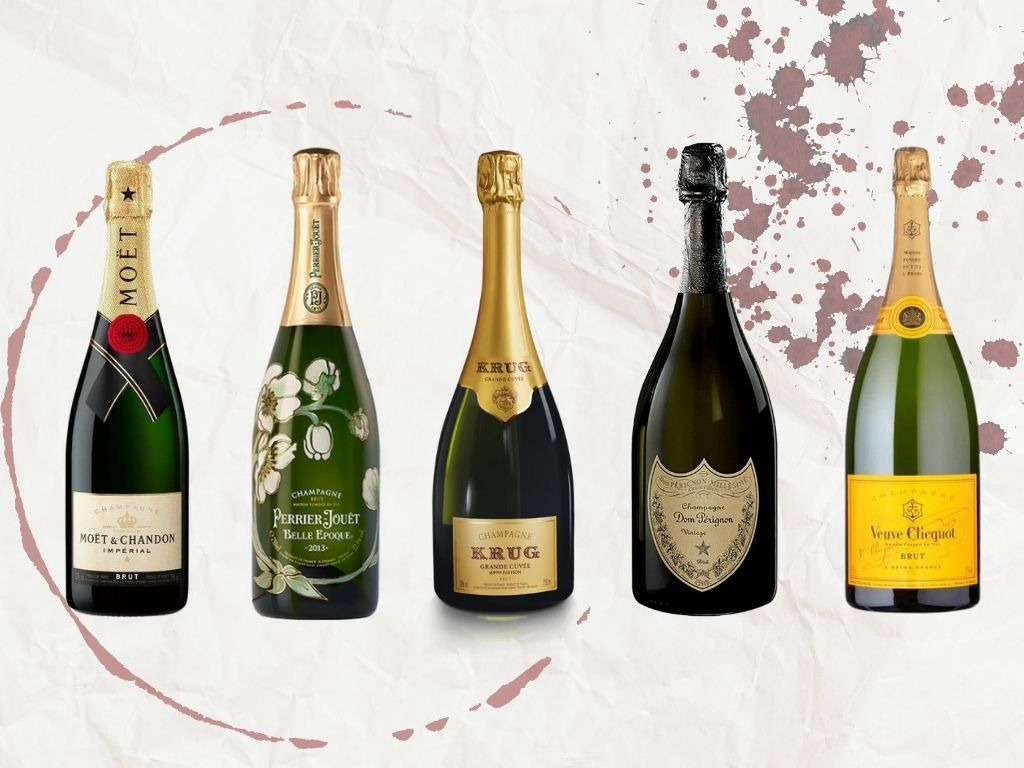
Champagne, the effervescent elixir of celebrations, has an allure that never fails to captivate our senses. It’s that pop, fizz, and sparkle that adds a touch of magic to any occasion. But beyond the bubbles and clinking glasses lies a question that piques the curiosity of many: What does Champagne taste like?
What Does Champagne Taste Like?
Champagne tastes bright and refreshing, with lively bubbles and flavors like green apples, lemons, and peaches. It can also have hints of flowers or nuts, and it feels fizzy and fun in your mouth.
Each type of Champagne has its own unique taste, so there’s a lot to explore and enjoy!
Champagne offers a delightful symphony of flavors. Picture a sip of golden sunshine with hints of crisp green apple, delicate pear, and a touch of citrus. It’s like a sip of happiness, dancing on your taste buds.
What Determines What Champagne Tastes Like?

The Grape Varieties
Champagne’s flavors depend on the grapes used in its production. Three main grape varieties are at play:
Chardonnay: Known for its elegance, it brings freshness and notes of lemon and green apple. If you’re after a pure, sophisticated sip, look for 100% Chardonnay champagnes, also known as Blanc de Blanc Champagne.
Pinot Noir: Adding depth and structure, it lends red fruit notes like cherry and strawberry to the blend. Blanc de Noirs champagnes are made from black grapes, primarily Pinot Noir.
Pinot Meunier: This grape adds a touch of bright, juicy red fruit, like raspberries. It’s often used in non-vintage blends to provide a youthful charm. Learn more about Pinot Meunier here.
Champagne Production
Champagne’s unique taste is also shaped by its production methods. The traditional method involves a second fermentation in the bottle, creating those delightful bubbles. The longer the aging on lees, the more complex and toasty the flavors become.
Terroir Influence
Terroir, the combination of soil, climate, and vineyard location, plays a significant role in Champagne’s taste. A Champagne from the chalky soils of the Côte des Blancs may taste different from one grown in the clay soils of Montagne de Reims.

Is Champagne Sweet?
Champagnes come in various sweetness levels, from completely dry to the dessert sweet. Brut is crisp and dry, while Extra Dry has a touch of sweetness. For those with a sweet tooth, Demi-Sec and Doux offer a luscious experience.
The sweetness level in Champagne is determined by a process called “dosage.” Here’s how it works:
- After the initial fermentation, Champagne is typically dry.
- The second fermentation, which happens in the bottle, creates the bubbles.
- After this fermentation, the wine can taste very dry because most of the sugar has turned into alcohol.
- To add some sweetness back, a mixture called “dosage” is added before sealing the bottle.
- The amount of sugar in the dosage determines the final sweetness level. Zero-dosage wines contain no dosage and will be completely dry.
Champagne Sweetness Scale
- Brut Nature: 0–3 g/L sugar (Driest option, No dosage applied)
- Extra Brut: 0–6 g/L sugar
- Brut: 0–12 g/L sugar (Most popular category, Balanced sweetness)
- Extra Sec: 12–17 g/L sugar
- Sec: 17-32g/sugar
- Demi-Sec: 32–50 g/L sugar
- Doux: 50+ g/L sugar (Sweetest option, Ideal after dinner or with wedding cake)
What does Rosé Champagne Taste Like?
Rosé Champagne is a delightful variation of this sparkling wine. It offers a delicate pink hue and a taste that’s like a romantic sunset in a glass.
Imagine sipping on a lovely blend of red berry flavors, such as strawberries and raspberries, with hints of florals like roses. It’s a bit fruity, a tad floral, and always charming, making it perfect for celebrating special moments.

Champagne Food Pairings
To elevate your Champagne experience, consider these food pairings:
Oysters: The brininess of oysters complements Champagne’s acidity, creating a harmonious union of flavors.
Sushi: The delicate flavors of sushi and the effervescence of Champagne make for a perfect match.
Fried Chicken: The crispy, savory goodness of fried chicken finds its counterpart in the refreshing bubbles of Champagne.
Cheeses: Creamy Brie, salty Parmesan, or tangy goat cheese – Champagne pairs wonderfully with a variety of cheeses.
Champagne and Occasions
Champagne is synonymous with celebrations, from toasting at weddings to New Year’s Eve extravaganzas. It’s a symbol of luxury and sophistication, making any moment feel extraordinary. In a world of sparkling wines, Champagne stands out as the pinnacle of sparkling perfection.

Popular Champagnes & What They Taste Like
Veuve Clicquot: Known for its vibrant and fruity style, Veuve Clicquot offers flavors of yellow apples, citrus, and a hint of toast. Shop it here.
Dom Pérignon: A vintage Champagne with rich, toasty notes, accompanied by ripe fruits like peach and apricot. Shop it here.
Moët & Chandon Impérial: An approachable choice, this Champagne is lively, with flavors of green apple, citrus, and white flowers. Shop it here.
Krug Grande Cuvée: A complex masterpiece, it boasts layers of flavors, including honey, dried fruit, and brioche. Shop it here.
Perrier-Jouët Belle Epoque: A floral beauty with flavors of white flowers, pear, and a touch of minerality. Shop it here.
In conclusion, the taste of Champagne is a magical journey through a world of flavors. From the grape varieties used to the sweetness levels, winemaking processes, and the influence of terroir, each sip tells a unique story.
So, next time you raise a glass of this sparkling nectar, savor the symphony of flavors and celebrate life’s special moments in style. Cheers! 🥂
FAQs
Is Brut Champagne Sweet?
Brut Champagne is not sweet; it’s actually quite dry. In the world of Champagne, the term “Brut” signifies a low sugar content. It’s the most common style of Champagne and is known for its crisp and refreshing taste. So, if you prefer a drier, less sweet Champagne, Brut is the way to go!
Is Champagne wine?
Yes, Champagne is a type of wine, but it’s more than just your typical still wine. It’s a sparkling wine, which means it has those delightful bubbles that make it unique.
The primary grapes used to make Champagne are Chardonnay, Pinot Noir, and Pinot Meunier, just like other still wines, but the winemaking process and the unique region where it’s produced give Champagne its special sparkle and distinct character.
Is Sparkling Wine the Same as Champagne?
Champagne is a type of sparkling wine, but not all sparkling wines can be called Champagne. Champagne is a protected term, and it can only be used for wines made in the Champagne region of France.
Other sparkling wines come from various regions and can have different grape varieties and production methods, leading to diverse tastes and styles. So, while Champagne is a sparkling wine, it’s a unique and specific one.
